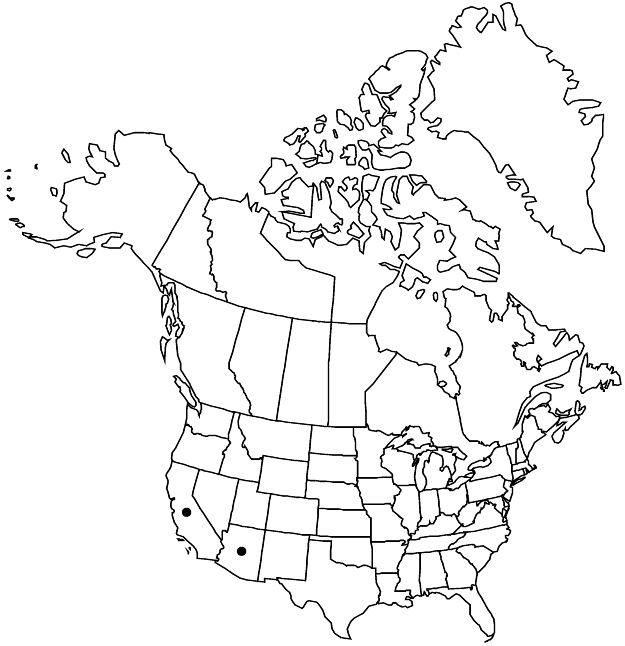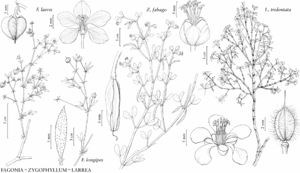Difference between revisions of "Fagonia laevis"
Proc. Biol. Soc. Wash. 24: 249. 1911.
FNA>Volume Importer |
imported>Volume Importer |
||
| (2 intermediate revisions by 2 users not shown) | |||
| Line 59: | Line 59: | ||
|publication year=1911 | |publication year=1911 | ||
|special status=Illustrated | |special status=Illustrated | ||
| − | |source xml=https:// | + | |source xml=https://bitbucket.org/aafc-mbb/fna-data-curation/src/2e0870ddd59836b60bcf96646a41e87ea5a5943a/coarse_grained_fna_xml/V12/V12_621.xml |
|genus=Fagonia | |genus=Fagonia | ||
|species=Fagonia laevis | |species=Fagonia laevis | ||
Latest revision as of 19:16, 5 November 2020
Subshrubs or shrubs, less than 1 m, to 1 m diam. Stems erect to spreading, intricately branched, dark green, not noticeably slender, mostly glabrous, but ultimate branches rarely sparsely stipitate-glandular, glands clear or yellow, to 0.1 mm diam.; older branches and sometimes younger parts scabrous, older branches becoming stolonlike, bearing many erect smaller branches. Leaves (1–)3-foliolate; stipules curved, reflexed to spreading, subulate, 1–6 mm, shorter than petioles, glabrous or sometimes sparsely stipitate-glandular; petiole 2–15 mm, glabrous or sometimes sparsely stipitate-glandular; leaflets linear-elliptic, glabrous, generally longer than petiole, apex spinose, terminal 3–18 × 1–5 mm, laterals to 15 × 3 mm, shorter and narrower than terminal, one or both commonly caducous. Pedicels 1.5–7 mm, glabrous or often sparsely stipitate-glandular. Flowers 1 cm diam.; sepals green to purple, elliptic to lanceolate, 2–3 × 1 mm, glabrous or often sparsely stipitate-glandular; petals pink to dark red-purple, 4–7 × 1.5–3 mm; stamen filaments 3–4.5 mm; ovary 2–3 mm, glabrous or puberulent, not glandular; style 1–2 mm. Capsules 4–5 × 3–6 mm, usually minutely strigose or puberulent, rarely glabrous, not glandular; style 1–2 mm, wider at base.
Phenology: Flowering Nov–Jun.
Habitat: Rocky desert hillsides to sandy washes.
Elevation: 0–1200 m.
Distribution

Ariz., Calif., Mexico (Baja California, Baja California Sur, Sonora).
Discussion
Fagonia laevis is restricted to the Mojave and Sonoran deserts, where it appears to have a more southern distribution than F. longipes. There has been some controversy about whether F. laevis and F. longipes are separate species. They are superficially similar to one another; however, F. longipes can be distinguished by its slender branches and longer pedicels and its minute stipitate-glandular hairs on stems, stipules, petioles, leaflets, pedicels, sepals, ovaries, and capsules (D. M. Porter 1963). Although F. laevis is usually glabrous, often pedicels and sepals, sometimes stipules and petioles, and rarely ultimate branches have a few small stipitate glands, but these never occur on ovaries or capsules. In addition, although the more southerly F. laevis and more northerly F. longipes overlap in their distributions in Arizona and California, and both species are found in dry, rocky or sandy, usually hillside habitats, they apparently do not grow together (R. S. Felger, pers. comm.). Also according to Felger, the herbage of the two differs, with F. laevis being dark green and F. longipes light to grayish green.
Selected References
None.
